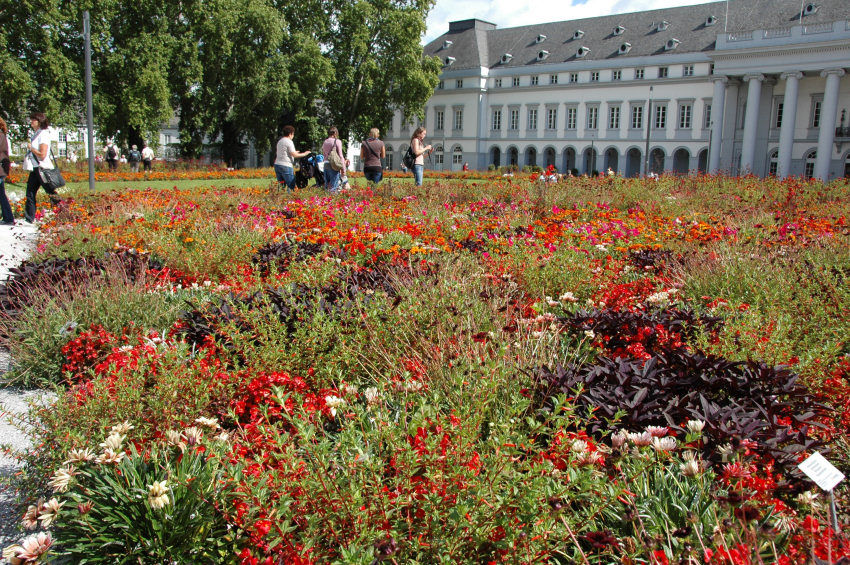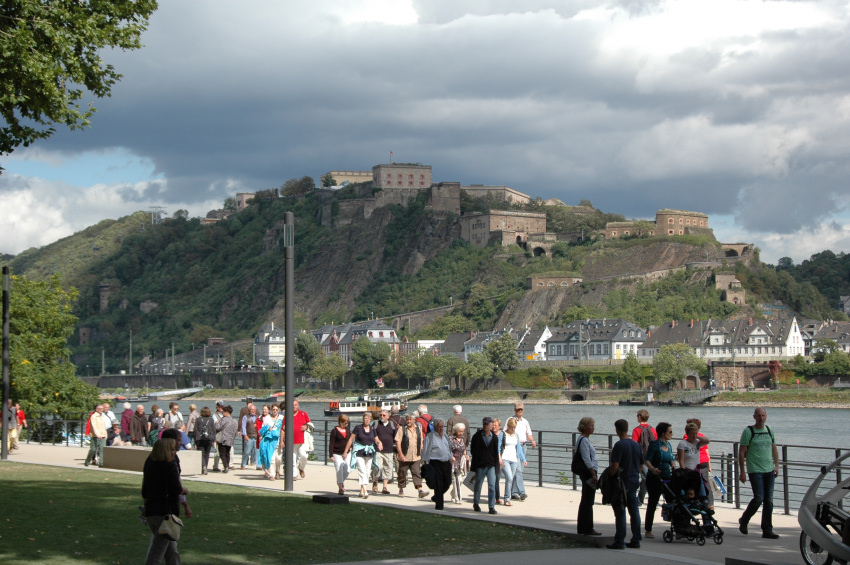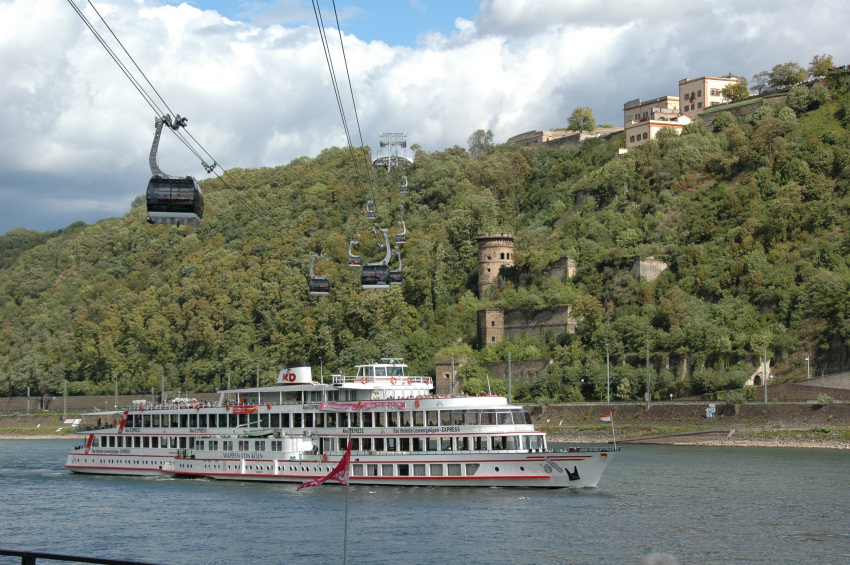
This weekend, Joe and I drove to Koblenz to visit the National Garden Show, a traveling event which takes place every two years. For six months, a German city transforms part of itself into a blooming paradise, and millions of visitors come from all over the world–and also all over Germany–to enjoy the result. The next Garden Show (international this time) will be in Hamburg. I can’t imagine a comparable event being held in the States, sadly enough. Maybe it’s that we’re too big a country to pull off something like this. Or maybe we don’t want to spend the public funds.
Koblenz is very old and very important. It only misses being the oldest city in Germany by about twenty years. The Romans founded it in 9 BC when they established a military post at the confluence of the Rhine and the Mosel rivers, and it’s the Latin word for confluence that gives Koblenz its name. The point where the Mosel flows into the Rhine–two wide and impressive rivers–is called the Deutsches Eck, or German Corner. The high cliffs of Ehrenbreitstein, on the other side of the Rhine river, overlook the Deutsches Eck. This grim-looking rock, once known as the Gibralter of the Rhine, was already an ancient fortification site when the Romans took it over. It has been occupied for three millennia, and it is covered with military ruins.

It is a masterstroke and a wonder that Koblenz could turn this part of the city once vital to defense into the heart of its National Garden Show. Flowerbeds decorate the promenade along the Rhine, and an impressive cable car line now links the Deutsches Eck with Ehrenbreitstein, where a 66 acre (27 hectare) park has been laid out on what must have been the flat parade ground of the fortress.

More on the Koblenz Garden Show tomorrow.
Photographs taken September, 2011, in Koblenz, Germany. Text copyright 2011 Clare B. Dunkle. Photos copyright 2011 Joseph R. Dunkle
